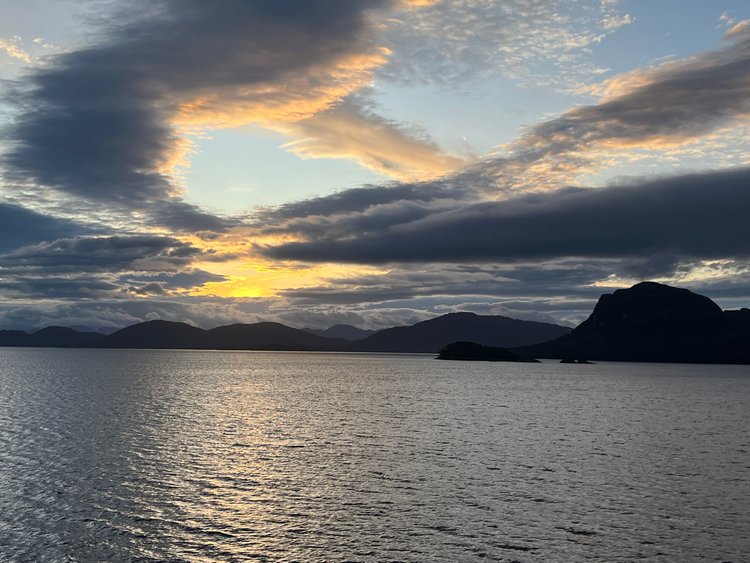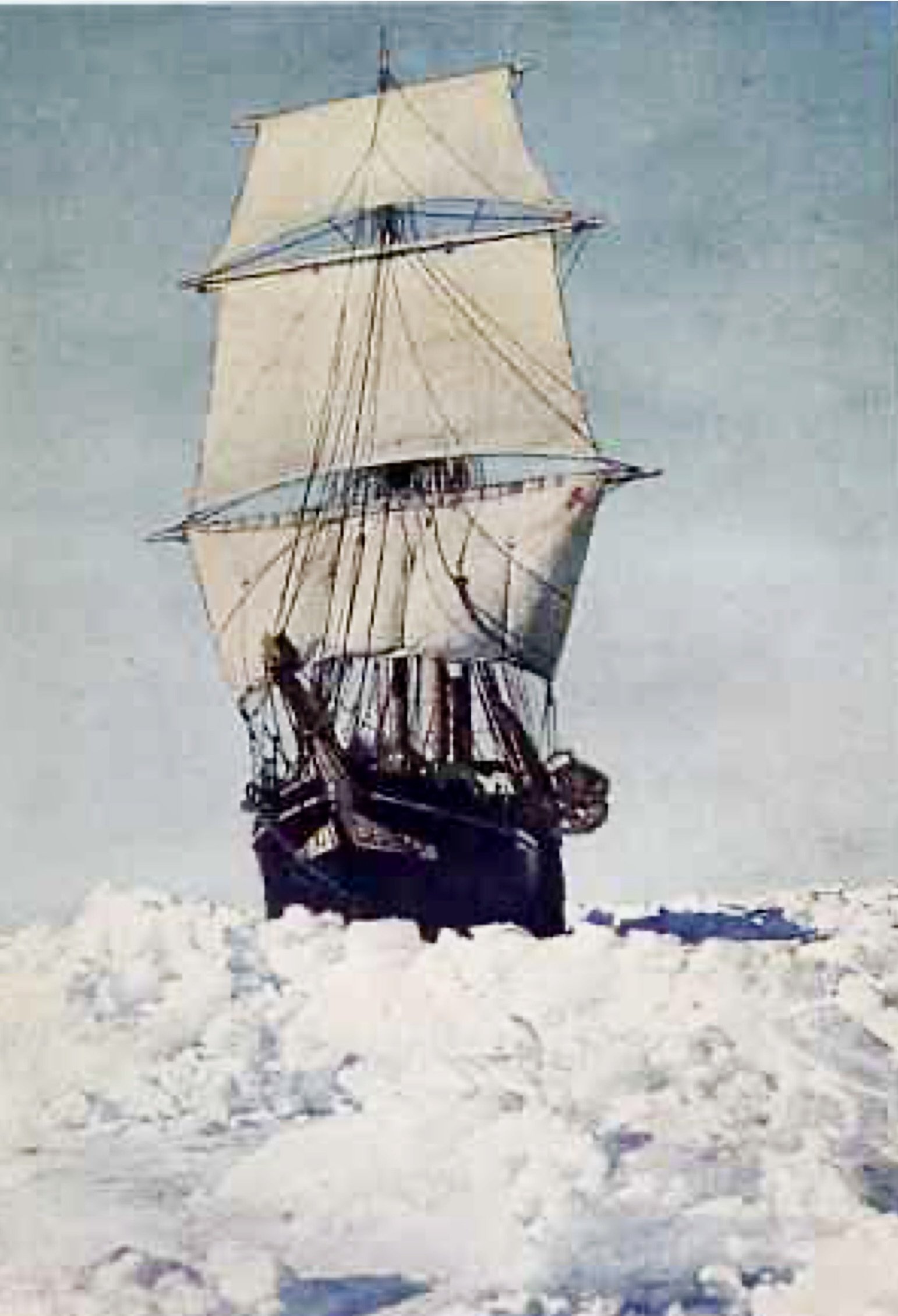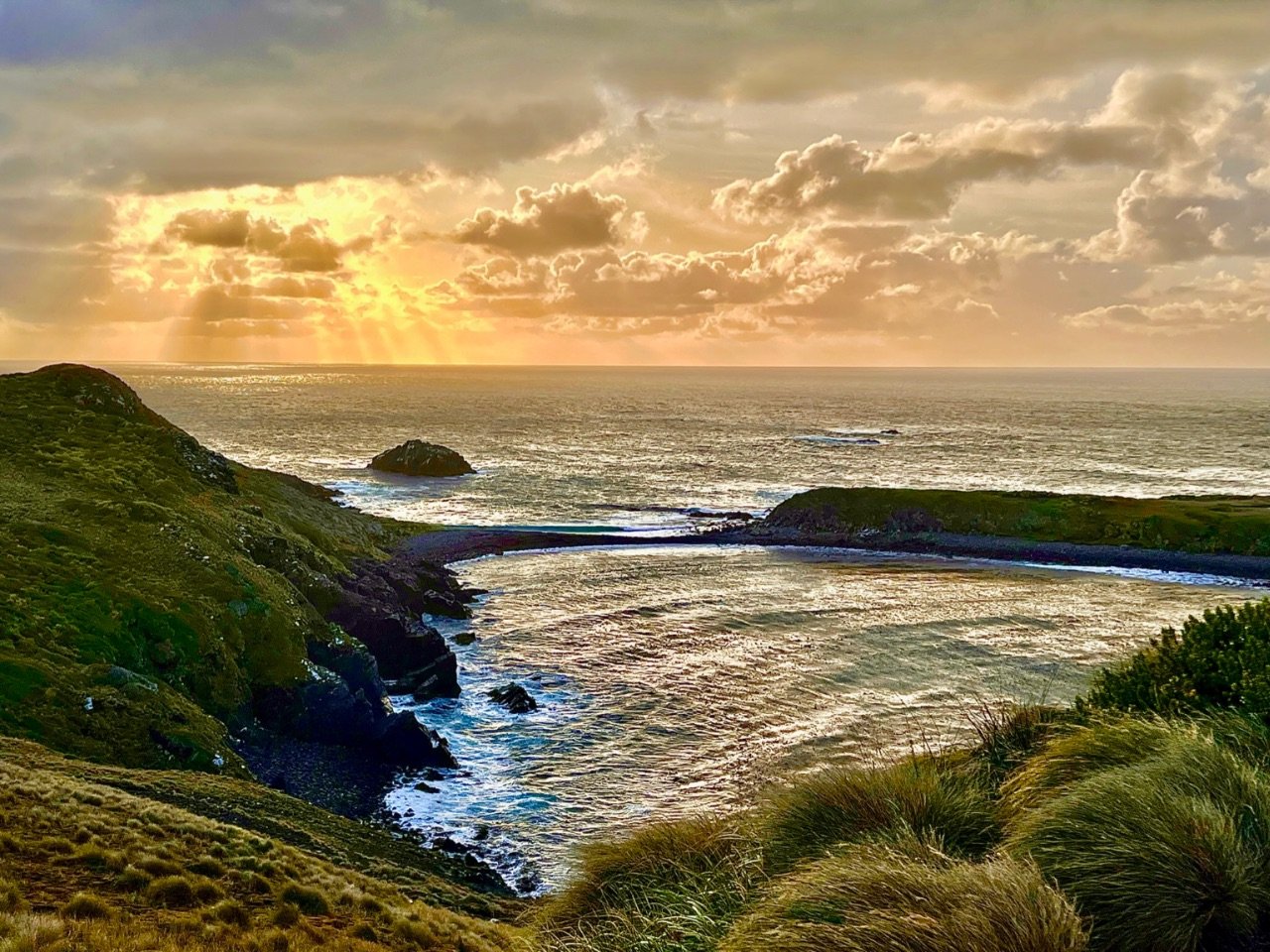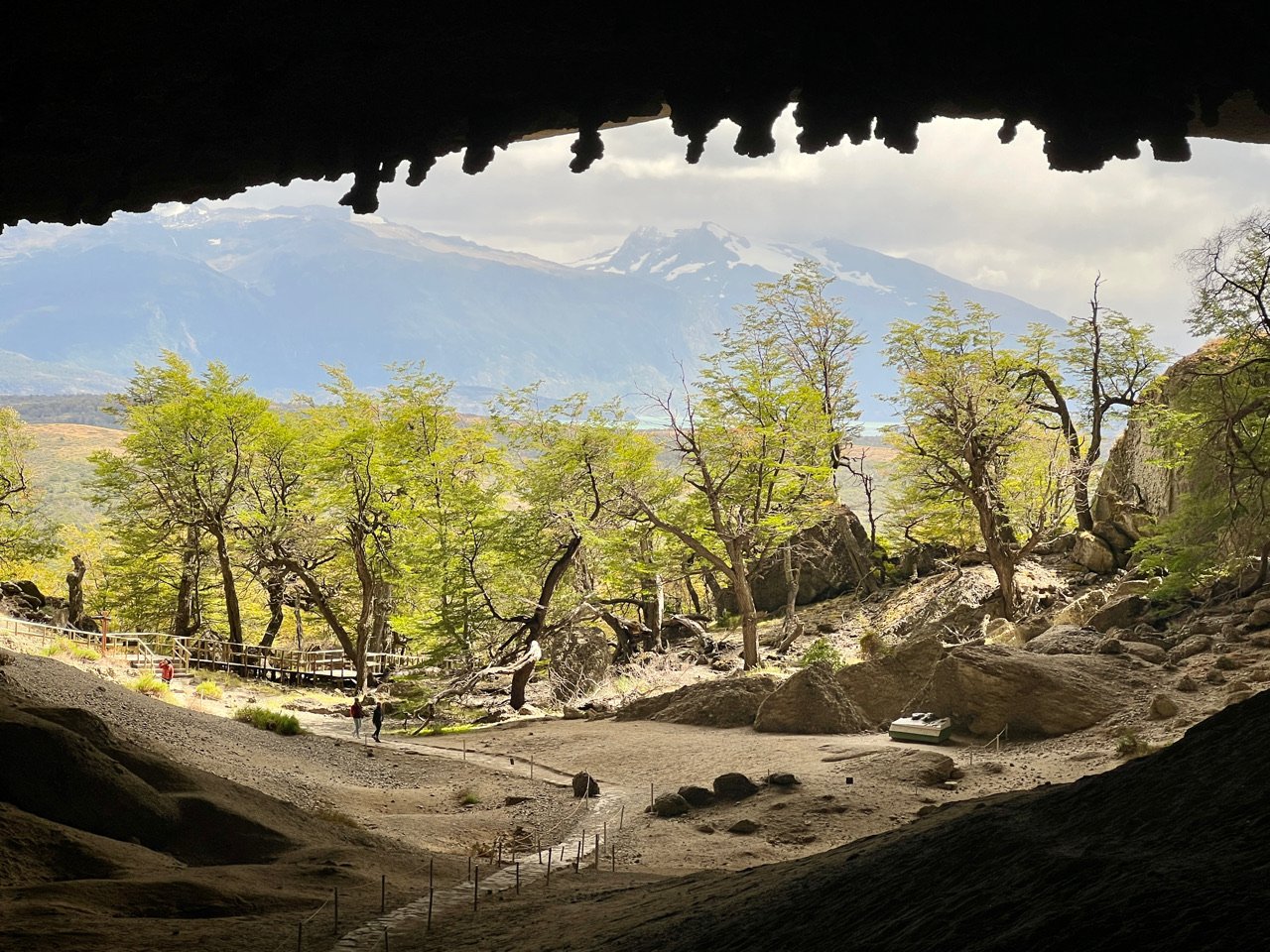10 Great Things to Do in Patagonia
by Chip Walter & Eric Ruben
“BELOW 40º (OF LATITUDE) THERE IS NO LAW. BELOW 50º THERE IS NOT GOD.”
From the Lake District to the Land of Fire
Sprawled across the southernmost tip of South America, far away from the cramped and entangled cities of North America, lies Patagonia. It’s a big unspoiled wilderness, an antidote to urban life, and, unless you’ve lost your senses entirely, or your last sliver of curiosity, it will captivate you. Monstrous glaciers, spectacular and unique wildlife (condors to guanaco), towering Andean peaks that run down the region’s spine, and on either side its endless pampas and shimmering lakes. If you want heat, Patagonia will deliver that, or bitter cold, and winds that will knock you sideways.
You can hike the world-renowned Torres del Paine National Park, marvel at the imposing Perito Moreno Glacier, or lose yourself in the wild serenity of Tierra del Fuego, a land Charles Darwin explored 150 years ago. And, if you’re up for it, there are plenty of exciting ways to get well off the beaten path: kayaking, white-water rafting, horseback-riding, week long hikes into the wilderness, even ice-climbing on Patagonia’s glacier fields. It’s an enormous place that spans two nations and reaches to the South Ocean and some of the most ferocious seas on earth. All you have to do is get there.
I first entered Patagonia from the northwest, heading from Peru to make my way down Chile’s coast to the town of Puerto Montt. There I had booked passage on a ferry called Navimag that would take me to Puerto Natales, Patagonia’s southern gateway. I had heard about it during my cruise from Miami to Lima over dinner with an inveterate traveler named Mike, a man who had already scrambled into and around 100 of Earth’s countries.
For five days Navimag coasted me, my wife Cyndy and about 100 other truckers, sailors, travelers and locals through the vast archipelago. I had never seen any part of the world that looked like this — the sea, immense mountain islands, fiery sunsets, a luminescent full moon, all as majestic as anything earthly could be. I struggled to hold it all in my mind because I knew no words could ever do the experience the remotest justice. In one stroke I realized how fortunate I was to witness this, and how sad to know I would leave it behind.
Patagonia still feels like a frontier, even as its few cities are slowly encroaching upon the wilderness. Sheep roam the steppes nourishing the wool industry that has long been the backbone of the economy, guanaco lope freely, condors arc and sweep across the broad sky in search of dinner, and if you’re lucky enough you may come across a pride of wary Puma. There is history too. Ancient native peoples — the Tehuelche, Yaghan, Ona, Haush and Alacaluf — thrived in these wild places for millennia before the expeditions of Juan Diaz del Solis, Magellan, Robert Fitzroy and others wiped them out. Descendants of these native people, their names and heritage nearly forgotten, now blend into a population of ethnic German, Croatian, English, Criollo, and Mestizo peoples.
Patagonia’s beauty, history and isolation, of course, are the very forces that are expanding the region’s tourism so if you are looking to get off the beaten path, make your move now. Unplug, find solace in the vastness of this place and marvel at its profound silence and unspoiled beauty … at least when the winds aren’t howling.
Here are ten great ways to do it …
1. Lose Yourself in Torres del Paine National Park
The crown jewel of Patagonia. Named for its three famous blue towers the Torres claw their way out of the earth and swallow the sky. The mountains are 60 million year old, igneous rocks that emerged when the magma chamber below bulged upward cooling into a gargantuan hump. The advance and retreat of glaciers over the eons created the immense beasts we see today. They are the sine qua non of Patagonian exploration. Along with the glaciers, valleys, lakes and rivers that surround them, the towers are so big and powerful they generate their own weather. Together they offer all the adventure you need. Hiking, climbing, horseback riding, kayaking, and more!
Other highlights include Gray Glacier, Cuernos del Paine, and Lake Pehoé. You could easily spend weeks exploring the park. Wildlife lovers will enjoy the guanaco herds grazing on the plains and soaring condors floating on the mountain’s thermal winds.
For visitors there are many available hikes through the park, both leisurely and brutal. Those with time on their hands should consider the O Circuit, a 6-10 day adventure looping around the Cordillera del Paine. This is a challenging hike across 66 miles (110 km). The W Trek is the most popular portion of the O Circuit, taking about half the time to traverse. The W can even be completed without food or equipment, taking advantage of the many campsites along the route.
The Hosteria del Torres is a charming place to stay. There is also the Grey Lake Hotel. For food, consider the Pampa Lodge, Hostería del Torres or Grey Lake.
The Blue Towers of Patagonia. This image is available digitally or a poster print here. (Photo - Chip Walter)

|
Thinking about a Patagonian expedition of your own? Consider this Perfect Patagonian Itinerary |

|
Thinking about a Patagonian expedition of your own? Consider this Perfect Patagonian Itinerary |
2. Cruise Tierra del Fuego and Stand at the Tip of Cape Horn
The archipelago across the Strait of Magellan is the southernmost tip of South America. Shared by both Chile and Argentina, the island chain has been inhabited for over 8,000 years. But here, today, the land is nearly empty. This is truly the definition of nowhere, but it’s not easy to get there. Australis operates a five day expedition from Punta Arenas through the islands, pausing to visit some of the most stunning and remote places on Earth. This is where a young Charles Darwin cut his teeth on evolutionary science and the region is filled with stories of adventure and death, from interactions with the native Yahgan and Fuegian people and hair-raising nautical adventures experienced by the likes of Sir Francis Drake, Ferdinand Magellan and Ernest Shackleton.
Australis Zodiacs take hikers from the ship to wild sites that very few people have seen, including a hike to Cape Horn (weather permitting), the southernmost bit of South America. Standing by its single red lighthouse you can imagine Magellan’s fleet sailing past, led by Trinidad. The weather is cold, rarely higher than 45°F in the summer. You won’t find much at the Cape, but visitors will see a tiny chapel and functioning lighthouse and a battered metal sculpture to visit. Enjoy the 270 step hike to the Horn’s highest peak. Unfortunately, the native Yaghan people are gone. Aside from a few Chileans, visitors will only encounter the people you’ve met on the cruise.
Another Australis highlight takes passengers through Glacier Alley fjord offering magnificent views of five tidewater glaciers extending their great tongues of ice from craggy valleys to the waters below.
A sunrise view south from Cape Horn. Only Antarctica is further south. (Photo - Chip Walter)

|
Meet your new go-to pullover for colder weather. Its fleece inside will keep you warm even against those Patagonian winds. On sale - only $29.95 Vagabonds Favor the Bold Unisex fleece pullover |

|
Meet your new go-to pullover for colder weather. Its fleece inside will keep you warm even against those Patagonian winds. On sale - only $29.95 Vagabonds Favor the Bold Unisex fleece pullover |
3. Ferry on the Navimag
Navimag operates a round trip ferry system through the Chilean fjords between Puerto Montt and Puerto Natales. This is transport for both locals and serious travelers. The riders hail from all around the world on weeks and month-long excursions to discover some of the most remote locations in the world. These ferries curate a collection of books and movies which, along with shipboard activities, can teach you about Chilean history and culture. Multilingual guides are onboard during the high season from October to April. There’s a charming little, glass-enclosed lounge for reading, daydreaming, conversation and beverages. A great place to pass the time, but not too much. You want to be outside as much as possible.
I enjoyed the cruise on Navimag’s newest vessel, Esperanza, with room for 244 passengers in spacious, but spartan accommodations. The cabins are shared among four or more riders, but two can buy out the whole cabin at a reasonable price. Common activity space is limited. You’ll find a not terribly usable gym, yoga room, and the lounge. Food is served cafeteria style three times a day. It’s good and there’s plenty of it, but it’s the conversations you have at the big tables while eating that are the real bonuses.
The ride is usually four days, but it took five when I made the trip. Sustained winds of 40 mph made it impossible for the ship to wrestle its way to the harbor so we anchored an additional full day. This is not uncommon for this voyage so make sure you have a flexible schedule. Riders can count on Patagonian winds to keep them alert across 10 degrees of southern latitude: 41°S to 51°S. That’s the origin of the saying, “Below 40º (of latitude) there is no law. Below 50º there is no God.”
View from Navimag. Read the day-by-day Navimag experience starting here. (Photo - Chip Walter)
4. Take a Hike Above Laguna Sofia
Laguna Sofia is about 30 minutes from Puerto Natales and you can reach it via a brand new highway. It may be one of the most underrated destinations in Patagonia. On this day-trek, you’ll climb several hundred vertical feet through grass and trees into scree to a promontory high above the lagoon. Beyond that lay rocky cliffs and snow-capped mountains in every direction. You might even be lucky enough to see a condor perched nearby. The winds, as usual, are out in force, powerful enough to knock you over. A side bonus: unlike other hikes in the Torres area, you can usually expect this one to be deserted.
5. Explore San Carlos de Bariloche
San Carlos de Bariloche is a charming tourist town with a striking resemblance to the Swiss Alps, tucked along the immense and pristine alpine lake Nahuel Huali. If you’re entering Patagonia from the north, Bariloche is a spectacular way to do it. Enjoy it for its scenery, hiking, winter skiing and upscale amenities. Besides the Alpine feel, the town itself underwent a tourism renaissance in the 1930s that added Swiss architectural touches to the town’s architecture. Even its chocolate is famous.
The region has a strange history too. Bariloche was a refuge for Nazis escaping Europe following World War II. Argentine president Juan Péron was a known Nazi sympathizer who courted European dictators. One legend has it that Hitler faked his death and fled with Eva Braun to Bariloche.
Geneva or Bariloche? (Photo Chip Walter)
6. Tour Ushuaia
Long regarded as the worlds southernmost city, with protestations from its much smaller Chilean neighbor, Puerto Williams, Ushuaia, also known as the “End of the World” is the capital of Tierra del Fuego province. Dress warm. The climate is an ocean moderated sub polar mild tundra; just a fancy way of calling it “cold.” If you’re looking for counterparts, think of Anchorage, Alaska, Reykjavik, Iceland, and Nuuk Nuuk, Greenland. But don’t let this keep you home.
Ushuaia’s breathtaking landscapes rival any on Earth, with snow-capped peaks, pristine glaciers and sparkling fjords surrounding the city. And it’s the launch point for adventures throughout Tierra del Fuego and beyond. Tierra del Fuego National Park, Martillo Island, and the Beagle Channel are reachable by ship. For those who love winter sports, this is your place. Skiing and ice hockey are immensely popular. The ski resort at Cerro Castor has the longest season in South America, thanks to that sub polar climate.
The End of the World Train takes visitors from Ushuaia on a two hour scenic tour of Tierra del Fuego National Park. The steam railway once transferred Ushuaia’s prisoners into forests where they harvested the lumber that built both the city and the prison in which they lived, the original reason the town was created!
For food, visit warm and vibrant La Parrilla Restaurant, famous for its flame roasted lamb. Hosteria Restaurante America is a good mid-range option for lodging, but if you want more upscale digs, consider the Albatros Hotel.
View of Ushuaia from the Beagle Channel. (Photo - Chip Walter)
7. Visit Cueva del Milodón Natural Monument
The huge Mylodon sloths, enormous beasts up to 12 feet tall that roamed the Patagonian landscape thousands of years ago, were the inspiration for Bruce Chatwin’s famous book, In Patagonia. Mylodons’ and their hairy coats were first discovered and cataloged by Darwin during his time with HMS Beagle. Although mylodon extinction is attributed to multiple factors, their disappearance also coincided with the arrival of certain two-legged pack hunter 11,000 years ago.
Cueva del Milodón is located near Puerto Natales. It is not a single cave, but a complex of three, each with a different character. The largest and most popular, Cueva Grande, is impressive for its size and its notoriety for Mylodon preservation. Equally compelling, for different reasons, are the other caves. Cueva del Medio sheltered humans over 11,000 years ago under a less forgiving climate, while the third cave, Cueva Chica, is deeper and darker than the other two. Spelunkers will enjoy exploring Chica’s nooks and crannies.
This visitor friendly site became a national monument in 1993.
View from inside this immense cavern. (Photo - Chip Walter)
8. Hunt Down Butch Cassidy’s Ranch
Butch Cassidy and The Sundance Kid is a classic American western tale (and Oscar-winning movie). Outlaws Butch Cassidy, Harry Longabaugh and Etta Place, strike it rich ripping off banks and trains in the Western United States until a special posse is sent to hunt them down. They collect their loot, escape to the remote South American plains and buy an 800 acre ranch, determined to go straight. For several years they do, but then they are found out. They sell the ranch and eventually (after Etta departs) the bank robbing begins again. Their fate isn’t as clear as the movies might tell you, but their Patagonian estate in Cholila, just a few hours from Bariloche still stands and is a fine place to explore. So is the bar just a half mile from the bandits’ old house, filled with fascinating paraphernalia and excellent beer and empanadas.
In Cholila consider staying nearby at La Pilarica Lodge.
La Casa de Butch Cassidy. Read about the Vagabond-Adventure hunt for the ranch here. (Photo - Chip Walter)
9. Hike Los Glacieres Parque Nationale
Most of epic Patagonia can be experienced from the Chilean side of the Andes. But this Argentinian gem is an exception. Los Glacieres is an immense ice field, one of the largest in the world, feeding hundreds of glaciers throughout the region. The geography has created two distinct areas for adventurers. To the north are the Viedma lake and glacier, along with Mount Fitzroy and Cerro Torre, popular for hikers and climbers. Perito Moreno Glacier, one of the most popular attractions in Argentina can be found to the south, its channel draining into Lago Argentino. Perito Moreno stubbornly resists the warming trend that weakens its glacial siblings; gains and losses are in equilibrium for the time being. Visitors can join tours, ride horseback, camp, fish, and more.
Access to the park is primarily served through El Calafate in the south, and El Chalten in the north.

|
This ranks as one of the most harrowing and remarkable rescues in the history of human adventure and exploration. On sale - only $2.99 South - The Story of Shackelton's Last Expedition. |

|
This ranks as one of the most harrowing and remarkable rescues in the history of human adventure and exploration. On sale - only $2.99 South - The Story of Shackelton's Last Expedition. |
10. Bust a Bronco in Cerro Castillo
You’ll recognize Cerro Castillo by the towering sculpture of a rearing horse at the big roundabout on the town’s outskirts. Perhaps its proximity to Torres del Paine is the reason, but this town has its own western charm. It has a long history in the wool shearing trade that remains a big part of the economy. Mule trains once carried wool across the pampas to Puerto Madryn. The town is also famous for its annual bronco busting horse festivals, called “Jineteadas.” The Jineteadas are divided into several parts throughout the year, one each weekend per month from December to March, where the local gauchos, Patagonian cowboys, compete. Time your visit accordingly to catch one of these great events.
There aren’t many places to stay, but we enjoyed the modest Riverline Lodge. Cozy rooms and a fine local restaurant.
Explore Further
Read about the extensive travels of my Vagabond-Adventure through Patagonia in the Vagabond Journal and our journey around the world traveling all seven continents, never by jet, at Vagabond-Adventure.com.
For more suggestions, including additional information about the services and experiences throughout Patagonia, visit our Patagonian Recommendations. Recommendations are updated frequently. Leave any questions in the comments below or contact the Vagabond-Adventure to learn more. Travelers looking for expert guidance will want to contract with a local expert. I am grateful for the services of Luciano Galvez Martinez who did a wonderful job helping us through this vast land. He grew up in Puerto Natales, speaks excellent English and immensely knowledgeable.







